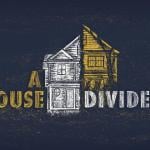THE ART OF WAR: LEE MILLER. Lee Miller is my favorite photographer ever, which probably makes her my favorite visual artist ever. (I have this theory that photography is the visual art most like literature, just as architecture is the visual art most like music. Yeah, now’s not the time to explain.) This post is all stemming from a conversation w/Ratty while I was in Princeton over New Year’s.
She started as a fashion photographer and Surrealist. But this post is about her war photography. She photographed London in the Blitz, and then went into Europe with the US Army (on assignment for Vogue, if memory serves). She was one of the first Americans to see the death camps.
Her WWII photographs basically do everything right. They’re intensely tied to their historical moment. The people and things they depict are intensely themselves. But they’re also freighted with emotional and existential weight–her photos are about us, now, as well as being about them, then. I have a xerox of one of her pictures on my wall: the silhouette of a beautiful opera singer, singing in the bombed-out ruins of (I think) the Dresden opera house. It’s a picture of Germany in World War II; it’s also a picture of the Fall. It’s an amazing composition, all blackness and angles and off-centered shaken, broken beauty–but the artistry doesn’t call attention to itself. The artistry doesn’t leach out the subject matter and make it suddenly a photo all about Lee Miller. (I feel like, and maybe this is a cliched opinion I should reconsider, Robert Mapplethorpe’s photos tend to vampirize their subject matter and become photos all about Mapplethorpe–diminishing the photos’ possibilities rather than deepening them.) Miller’s astonishing grasp of (especially) framing and angular lines gives her photos poignance. You’re lifted out of them first by their often horrifying subject matter; then by her brilliance; but she always, always returns you, lets you go back into the photo with a deeper sense of sympathy and a sense of deeper layers of meaning in the picture and the experience it depicts.
That deepening of sympathy happens even when maybe Miller didn’t want it to. She has one excruciating photo of a dead blonde teenager–the daughter of a prominent SS official, I think. (My copy of The Lives of Lee Miller is loaned out at the moment.) The girl and her family all killed themselves in advance of the Allies’ troops. Miller’s caption: “This is a good German. She is dead.”
Yeah. And yet–it’s completely impossible to look at that sprawled, humiliated, film-star perfect body, and stop at the caption’s wry cruelty. Miller shot the girl with the dignity and instinctively empathetic quality of the subjects of portraits. The photo is complicated and it hurts, where the caption is meant to duck away from the hurt.
I think Miller’s Surrealist background really helped her war pictures. Partly, it’s just that Surrealism is emotionalist, all breathy and shuddery and blood pulsing beneath tender skin. You’re immediately put on terrain drawn from dreams, not documentaries.
But also, the Surrealists had a talent for making things look completely themselves and yet also mysterious, pregnant with some unseen and non-obvious meaning. Magritte’s textures are totally realistic. When he paints fur, it looks like it would feel like fur. There’s a thisness in Surrealism, like that Chesterton quote:
That strangeness of things, which is the light in all poetry, and indeed in all art, is really connected with their otherness; or what is called their objectivity. …According to Aquinas, the object becomes a part of the mind; nay, according to Aquinas, the mind actually becomes the object. But, as one commentator acutely puts it, it only becomes the object and does not create the object. In other words, the object is an object; it can and does exist outside the mind, or in the absence of the mind. And therefore it enlarges the mind of which it becomes a part. The mind conquers a new province like an emperor; but only because the mind has answered the bell like a servant. …For this feeding upon fact is itself; as an organ it has an object which is objective; this eating of the strange strong meat of reality.
Surrealism isn’t anti-realism–it’s maybe even the opposite of anti-realism. It’s a genre in which things are always both themselves and shadows of something bigger.
I’m struck by the fact that a Surrealist was one of the greatest depictors of a conflict about, in large part, what it is to be human, who is human, and what it means that we can do almost anything to a living human. I don’t have anything really to say there. I just think it’s striking.











